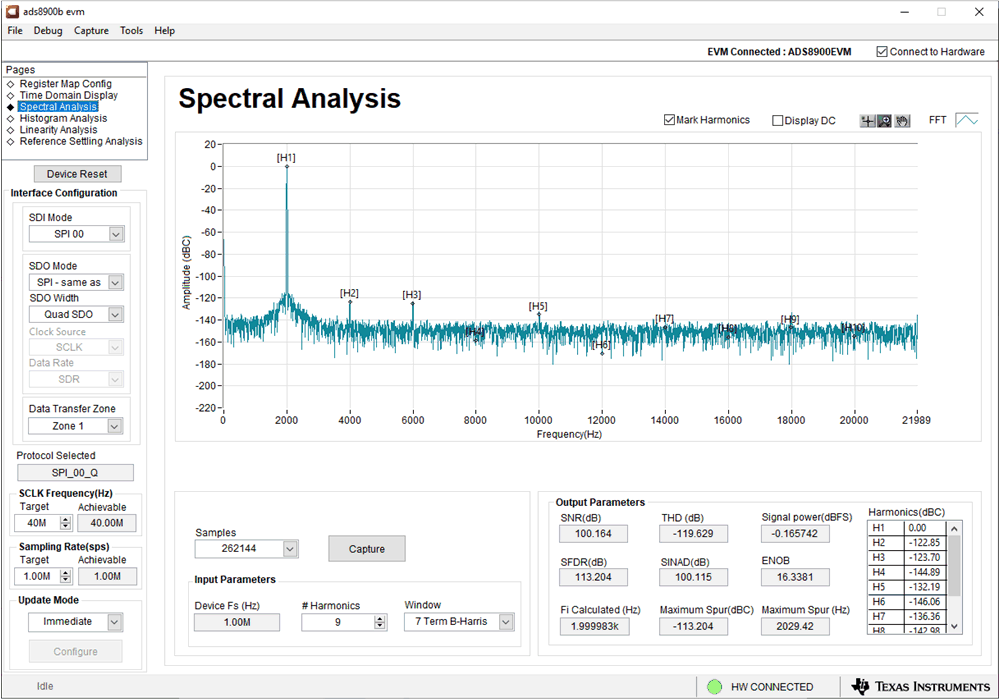SBAU269C October 2016 – August 2021 ADS8900B
6.4 Spectral Analysis Tool
The spectral analysis tool, shown in Figure 6-6, is intended to evaluate the dynamic performance (SNR, THD, SFDR, SINAD, and ENOB) of the ADS8900B SAR ADC through single-tone sinusoidal signal FFT analysis using the 7-term Blackman-Harris window setting. Also, the window setting of None can be used to look for noise spurs over frequency in DC inputs.
For dynamic performance evaluation, the external differential source must have better specifications than the ADC itself to ensure that the measured system performance is not limited by the performance of the signal source. Therefore, the external reference source must meet the source requirements mentioned in Figure 6-6
For 2-kHz SNR and ENOB evaluation at a maximum throughput of 1 MSPS, the number of samples must be 32768 or 65536. Any more samples bring the noise floor so low that the external source phase noise can dominate the SNR and ENOB calculations. However, for THD and SFDR evaluation, a larger number of samples must be used to reduce the noise floor below –140 dBc to analyze noise-free harmonics and spurs in the order of –120 dBc. Such analysis requires at least 262144 samples.
 Figure 6-6 Spectral
Analysis Tool
Figure 6-6 Spectral
Analysis Tool